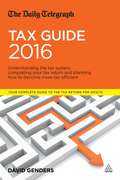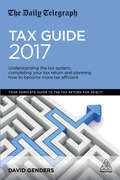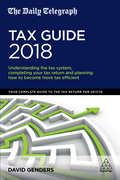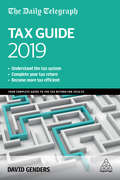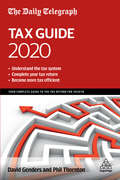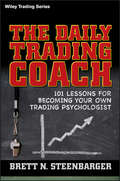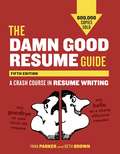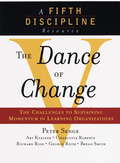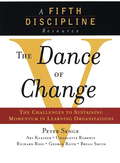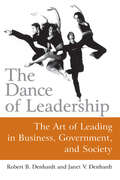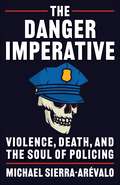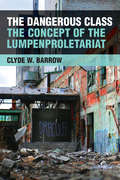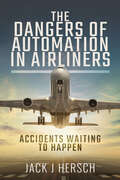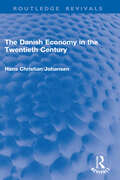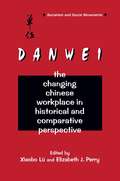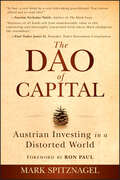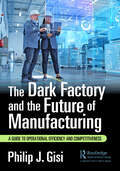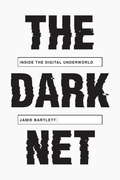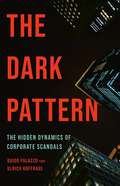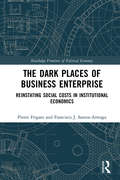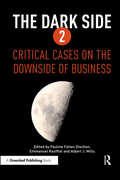- Table View
- List View
The Daily Telegraph Tax Guide 2016: Understanding the Tax System, Completing Your Tax Return and Planning How to Become More Tax Efficient
by David GendersThe Daily Telegraph Tax Guide contains everything you need to know about completing a Self-Assessment tax return for 2015/16 including:* all you need to know on the New ISAs (NISAs) and the major changes allowing pensioners access to more of their pension funds* section-by-section worked illustrations* key changes from the 2015 Autumn Statement and 2016 Budget* dealing effectively with HM Revenue & Customs* when and how to file your return and pay your taxFor any taxpayer, whether self-employed, part-time, retired or unemployed, the book is an invaluable resource that can help ensure that you are as tax efficient as possible, offering practical advice, timetables and examples that aim to simplify what many people view as a complex and challenging procedure.With a whole range of top tips for saving on all types of tax, The Daily Telegraph Tax Guide is the essential guide to completing your 2015/2016 tax return.
The Daily Telegraph Tax Guide 2017: Understanding the Tax System, Completing Your Tax Return and Planning How to Become More Tax Efficient
by David GendersThe Daily Telegraph Tax Guide contains everything you need to know about completing a Self-Assessment tax return for 2016/17.For any taxpayer, whether self-employed, part-time, retired or unemployed, the book is an invaluable resource that can help ensure that you are as tax efficient as possible, offering practical advice, timetables and examples that aim to simplify what many people view as a complex and challenging procedure.With a whole range of top tips for saving on all types of tax, The Daily Telegraph Tax Guide is the essential guide to completing your 2016/2017 tax return.
The Daily Telegraph Tax Guide 2018: Understanding the Tax System, Completing Your Tax Return and Planning How to Become More Tax Efficient
by David GendersThe Daily Telegraph Tax Guide contains everything you need to know about completing a self-assessment tax return for 2017/18. This is the only credible and practical guide on the market to this perennial, time-intensive and often stressful demand on any taxpayer. Whether self-employed, part-time, retired or unemployed, this invaluable book is the ultimate resource that can help ensure that you are as tax efficient as possible, offering practical advice, timetables and examples that aim to simplify what many people view as a complex and challenging procedure. Taking into account all of the changes for 2017/2018, this will ensure you get your tax return completed on time and in an efficient manner, saving you money down the line and avoiding a whole lot of worries. With an extensive range of top tips for saving on all types of tax, The Daily Telegraph Tax Guide is the essential guide to completing your 2017/2018 tax return.
The Daily Telegraph Tax Guide 2019: Your Complete Guide to the Tax Return for 2018/19
by David GendersThe Daily Telegraph Tax Guide is the UK's bestselling tax handbook, containing everything you need to know about completing a self-assessment tax return for 2018/19. It includes: · Key changes from the Budget and Spring Statements · Dealing effectively with HM Revenue & Customs · Worked illustrations showing you how to complete your tax submission· How living or working abroad affects the tax that you pay· Tax saving tips which will help you save money· Inheritance Tax and potentially exempt transfers Whether you are self-employed, work part time or full time, are unemployed or retired, if you pay tax, The Daily Telegraph Tax Guide is invaluable. It helps ensure that you are as tax efficient as possible, offering practical advice, timetables and examples that make the complex and challenging world of tax returns easier to understand.
The Daily Telegraph Tax Guide 2020: Your Complete Guide to the Tax Return for 2019/20
by Phil ThorntonThe Daily Telegraph Tax Guide is the UK's bestselling tax handbook, containing everything you need to know about completing a self-assessment tax return for 2019/20. With advice on how to complete self-assessment tax returns and a number of tax saving tips, this book includes:·Key changes from the Budget and Spring Statements ·Dealing effectively with HM Revenue & Customs ·Worked illustrations showing you how to complete your tax submission·How living or working abroad affects the tax that you pay·Tax saving tips which will help you save money·Inheritance Tax and potentially exempt transfersWhether you are self-employed, work part time or full time, are unemployed or retired, if you pay tax, The Daily Telegraph Tax Guide is invaluable. It helps ensure that you are as tax efficient as possible, offering practical advice, timetables and examples that make the complex and challenging world of tax returns easier to understand.
The Daily Trading Coach
by Brett N. SteenbargerPraise for The Daily Trading Coach"A great book! Simply written, motivational with unique content that leads any trader, novice or experienced, along the path of self-coaching. This is by far Dr. Steenbarger's best book and a must-have addition to any trader's bookshelf. I'll certainly be recommending it to all my friends."-Ray BarrosCEO, Ray Barros Trading Group"Dr. Steenbarger has been helping traders help themselves for many years. Simply put, this book is a must-read for anyone who desires to achieve great success in the market."-Charles E. KirkThe Kirk Report"'Dr. Brett', as he is affectionately known by his blog readers, has assembled a practical guide to self coaching in this excellent book. The strategies he outlines are further enhanced with numerous resources and exercises for the reader to refer to and keep the principles fresh. I enthusiastically encourage anyone interested in bettering their trading and investing to read this book and keep it on their desk as a constant source of learning."-Brian Shannon, www.alphatrends.netauthor of Technical Analysis Using Multiple Timeframes"Dr. Brett has distilled his years of experience, as both a trader and a psychologist/coach, into the 101 practical lessons found in The Daily Trading Coach. Those lessons provide effective strategies for coping with the stumbling blocks that traders often face. This book should be a cornerstone of any serious trader's library."-Michael Seneadzaequities trader and blogger at TraderMike.net
The Dalian Wanda Group: Using IT to Become an Asset-Light, Service-Oriented Enterprise
by Lynda M. Applegate Ramiro Montealegre Xiangling FuHBS Professor Lynda M. Applegate, Professor Ramiro Montealegre (University of Colorado at Boulder), and Professor Xiangling Fu (Beijing University of Post and Telecommunications) prepared this case. It was reviewed and approved before publication by a company designate. Funding for the development of this case was provided by Harvard Business School and not by the company. HBS cases are developed solely as the basis for class discussion. Cases are not intended to serve as endorsements, sources of primary data, or illustrations of effective or ineffective management.
The Damn Good Resume Guide, Fifth Edition: A Crash Course in Resume Writing
by Beth Brown Yana ParkerOne of the best-selling resume books of all time and a trusted resource for job-seekers for nearly three decades, this edition of The Damn Good Resume Guide has been completely revised and updated for today's marketplace.One of the best-selling resume books of all time and a trusted resource for job-seekers for nearly three decades, this edition of The Damn Good Resume Guide has been completely revised and updated for today's marketplace.The Shortest Distance Between You and Your Next Job For hundreds of thousands of job seekers, The Damn Good Resume Guide has been the go-to resource for writing and refining their resumes to damn near perfection. Filled with savvy advice and written in a straightforward, user-friendly style, The Damn Good Resume Guide will help you zero in on that dream job, then craft a winning resume that gets your foot in the door. This tried-and-true best seller has been fully revised and updated for today's job market, including: Contemporary sample resumes (all of which landed interviews!) with job objectives running the career gamut--from line cook to sales manager, school principal to software engineer.Tips on creating a functional, chronological, or hybrid resume--and advice on choosing which format is best for you.What to include and what to leave out of your resume, so you get the job you really want.Smart ways to deal with gaps in your work history and other less-than-ideal resume scenarios.Instructions for writing cover emails and submitting resumes electronically.How to set up (and excel at) an informational interview.Advice for formatting, polishing, and proofing your resume so that it stands out in the right way.And much more!Follow Parker and Brown's ten easy steps, and you'll be well on your way to a smart, effective, and thoroughly modern resume--a resume that makes you look good and produces results.
The Dance of Change
by Peter M. SengeSince Peter Senge published his groundbreaking book The Fifth Discipline, he and his associates have frequently been asked by the business community: "How do we go beyond the first steps of corporate change? How do we sustain momentum?" They know that companies and organizations cannot thrive today without learning to adapt their attitudes and practices. But companies that establish change initiatives discover, after initial success, that even the most promising efforts to transform or revitalize organizations--despite interest, resources, and compelling business results--can fail to sustain themselves over time. That's because organizations have complex, well-developed immune systems, aimed at preserving the status quo.Now, drawing upon new theories about leadership and the long-term success of change initiatives, and based upon twenty-five years of experience building learning organizations, the authors of The Fifth Discipline Fieldbook show how to accelerate success and avoid the obstacles that can stall momentum. The Dance of Change, written for managers and executives at every level of an organization, reveals how business leaders can work together to anticipate the challenges that profound change will ultimately force the organization to face. Then, in a down-to-earth and compellingly clear format, readers will learn how to build the personal and organizational capabilities needed to meet those challenges.These challenges are not imposed from the outside; they are the product of assumptions and practices that people take for granted--an inherent, natural part of the processes of change. And they can stop innovation cold, unless managers at all levels learn to anticipate them and recognize the hidden rewards in each challenge, and the potential to spur further growth. Within the frequently encountered challenge of "Not Enough Time," for example--the lack of control over time available for innovation and learning initiatives--lies a valuable opportunity to reframe the way people organize their workplaces.This book identifies universal challenges that organizations ultimately find themselves confronting, including the challenge of "Fear and Anxiety"; the need to diffuse learning across organizational boundaries; the ways in which assumptions built in to corporate measurement systems can handcuff learning initiatives; and the almost unavoidable misunderstandings between "true believers" and nonbelievers in a company.Filled with individual and team exercises, in-depth accounts of sustaining learning initiatives by managers and leaders in the field, and well-tested practical advice, The Dance of Change provides an insider's perspective on implementing learning and change initiatives at such corporations as British Petroleum, Chrysler, Dupont, Ford, General Electric, Harley-Davidson, Hewlett-Packard, Mitsubishi Electric, Royal DutchShell, Shell Oil Company, Toyota, the United States Army, and Xerox. It offers crucial advice for line-level managers, executive leaders, internal networkers, educators, and others who are struggling to put change initiatives into practice.
The Dance of Change: The Challenges of Sustaining Momentum in Learning Organizations (A Fifth Discipline Resource)
by Bryan Smith Art Kleiner Peter M. Senge Charlotte Roberts Richard Ross Geroge RothThe Dance of Change offers exercises, tools and techniques for sustaining organisational learning over the long term, as well as suggestions, advice, cautions and warnings based on the experience of people who have already followed the path suggested by the author in The Fifth Discipline. The central message of the text is that learning is the only sustainable competitive advantage.
The Dance of Leadership: The Art of Leading in Business, Government, and Society
by Janet V DenhardtMost successful leaders know that leadership is an art, not a science. They recognize that beyond all the sophisticated systems and theories, the strategies and tactics, leadership is ultimately about intangible things such as timing, intuition, and passion This book shows how successful leaders can master the artistic aspects of their work. It guides readers to the ways that the leadership can be practiced and learned. "The Dance of Leadership" explores the art of leadership by examining the perspectives, training, and insights of artists, most particularly in the fields of music and dance. The authors look at how these people learn their craft, practice their skills, and attain mastery of their art. Then they adapt these lessons from the arts to the experiences of successful leaders in all fields. This book incorporates in-depth interviews with some of the world's premier artists and writers, as well as dozens of leader business, government, the military, and sports. The result is a book that celebrates the art of leadership - but an art that can learned, developed, and practiced.
The Danger Imperative: Violence, Death, and the Soul of Policing
by Michael Sierra-ArévaloPolicing is violent. And its violence is not distributed equally: stark racial disparities persist despite decades of efforts to address them. Amid public outcry and an ongoing crisis of police legitimacy, there is pressing need to understand not only how police perceive and use violence but also why.With unprecedented access to three police departments and drawing on more than 100 interviews and 1,000 hours on patrol, The Danger Imperative provides vital insight into how police culture shapes officers’ perception and practice of violence. From the front seat of a patrol car, it shows how the institution of policing reinforces a cultural preoccupation with violence through academy training, departmental routines, powerful symbols, and officers’ street-level behavior.This violence-centric culture makes no explicit mention of race, relying on the colorblind language of “threat” and “officer safety.” Nonetheless, existing patterns of systemic disadvantage funnel police hyperfocused on survival into poor minority neighborhoods. Without requiring individual bigotry, this combination of social structure, culture, and behavior perpetuates enduring inequalities in police violence.A trailblazing, on-the-ground account of modern policing, this book shows that violence is the logical consequence of an institutional culture that privileges officer survival over public safety.
The Dangerous Class: The Concept of the Lumpenproletariat
by Clyde BarrowMarx and Engels’ concept of the “lumpenproletariat,” or underclass (an anglicized, politically neutral term), appears in The Communist Manifesto and other writings. It refers to “the dangerous class, the social scum, that passively rotting mass thrown off by the lowest layers of old society,” whose lowly status made its residents potential tools of the capitalists against the working class. Surprisingly, no one has made a substantial study of the lumpenproletariat in Marxist thought until now. Clyde Barrow argues that recent discussions about the downward spiral of the American white working class (“its main problem is that it is not working”) have reactivated the concept of the lumpenproletariat, despite long held belief that it is a term so ill-defined as not to be theoretical. Using techniques from etymology, lexicology, and translation, Barrow brings analytical coherence to the concept of the lumpenproletariat, revealing it to be an inherent component of Marx and Engels’ analysis of the historical origins of capitalism. However, a proletariat that is destined to decay into an underclass may pose insurmountable obstacles to a theory of revolutionary agency in post-industrial capitalism. Barrow thus updates historical discussions of the lumpenproletariat in the context of contemporary American politics and suggests that all post-industrial capitalist societies now confront the choice between communism and dystopia.
The Dangers of Automation in Airliners: Accidents Waiting to Happen
by Jack J. HerschThe award-winning journalist delves “into the confluence of modern airplane technology and pilot behavior to probe how and why flight disasters happen” (BookTrib).Aviation automation has been pushed to its limits, with pilots increasingly relying on it. Autopilot, autothrottle, autoland, flight management systems, air data systems, inertial guidance systems. All these systems are only as good as their inputs which, incredibly, can go rogue. Even the automation itself is subject to unpredictable failure. And what of the pilots? They began flight training with their hands on the throttle and yoke, and feet on the rudder pedals. Then they reached the pinnacle of their careers—airline pilot—and suddenly they were going hours without touching the controls other than for a few minutes on takeoff and landing. Are their skills eroding? Is their training sufficient to meet the demands of today’s planes?The Dangers of Automation in Airliners delves deeply into these questions. You’ll be in the cockpits of the two doomed Boeing 737 MAXs, the Airbus A330 lost over the South Atlantic, and the Bombardier Q400 that stalled over Buffalo. You’ll discover exactly why a Boeing 777 smacked into a seawall, missing the runway on a beautiful summer morning. And you’ll watch pilots battling—sometimes winning and sometimes not—against automation run amok. This book also investigates the human factors at work. You’ll learn why pilots might overlook warnings or ignore cockpit alarms. You’ll observe automation failing to alert aircrews of what they crucially need to know while fighting to save their planes and their passengers.The future of safe air travel depends on automation. This book tells its story.
The Danish Economy in the Twentieth Century (Routledge Revivals)
by Hans Christian JohansenThe Danish Economy in the Twentieth Century (1987) surveys the Danish economy, examining the effects of the rapid industrialisation which occurred in the country in the late nineteenth and early twentieth centuries. It shows how Denmark was less severely affected by the Depression of the 1930s and the two world wars than were other countries in Europe. It shows how Denmark maintained its position by the skilful commercial exploitation of its comparative advantages, in all sectors – agriculture, manufacturing and services, but most notably in dairy and livestock products.
The Dannon Company: Marketing and Corporate Social Responsibility (A)
by Christopher Marquis Bobbi Thomason Pooja Shah Amanda TollesonAt the end of 2009, The Dannon Company was considering pro actively communicating its CSR efforts to consumers. With the strong connection between Dannon's production of health foods and its commitment to health and nutrition-based CSR activities, communicating these activities to consumers could enhance the company's success, but risked tainting its deeply ingrained CSR as a marketing ploy. Dannon wanted to maintain its holistic approach to social responsibility and commitment to social values. Dannon's CSR focused on three areas: Nutrition and Health, People and Nature. The case follows the perspectives of various stakeholders within the organization, including members of the Marketing, Human Resources and Corporate Affairs departments. Some of the specific questions examined are: Should we communicate Dannon's CSR activities? What would be the best means to do so? Should it be a corporate or brand level campaign? How would the parent company, Danone, respond? Can CSR remain sincere when being leveraged for PR purposes?
The Dannon Company: Marketing and Corporate Social Responsibility (B)
by Christopher Marquis Bobbi ThomasonDetails Dannon's decision to initiate a cause marketing program focused on breast cancer to directly compete with Yoplait.
The Danwei: Changing Chinese Workplace in Historical and Comparative Perspective
by XiaoboThe danwei, or work unit, occupies a central place in Chinese society. To understand Chinese politics demands a better understanding of this system. This volume provides a systematic study of the danwei system and addresses a variety of questions from historical and comparative perspectives.
The Dao of Capital: Austrian Investing in a Distorted World
by Mark SpitznagelAs today's preeminent doomsday investor Mark Spitznagel describes his Daoist and roundabout investment approach, “one gains by losing and loses by gaining.” This is Austrian Investing, an archetypal, counterintuitive, and proven approach, gleaned from the 150-year-old Austrian School of economics, that is both timeless and exceedingly timely. In The Dao of Capital, hedge fund manager and tail-hedging pioneer Mark Spitznagel—with one of the top returns on capital of the financial crisis, as well as over a career—takes us on a gripping, circuitous journey from the Chicago trading pits, over the coniferous boreal forests and canonical strategists from Warring States China to Napoleonic Europe to burgeoning industrial America, to the great economic thinkers of late 19th century Austria. We arrive at his central investment methodology of Austrian Investing, where victory comes not from waging the immediate decisive battle, but rather from the roundabout approach of seeking the intermediate positional advantage (what he calls shi), of aiming at the indirect means rather than directly at the ends. The monumental challenge is in seeing time differently, in a whole new intertemporal dimension, one that is so contrary to our wiring. Spitznagel is the first to condense the theories of Ludwig von Mises and his Austrian School of economics into a cohesive and—as Spitznagel has shown—highly effective investment methodology. From identifying the monetary distortions and non-randomness of stock market routs (Spitznagel's bread and butter) to scorned highly-productive assets, in Ron Paul's words from the foreword, Spitznagel “brings Austrian economics from the ivory tower to the investment portfolio.” The Dao of Capital provides a rare and accessible look through the lens of one of today's great investors to discover a profound harmony with the market process—a harmony that is so essential today.
The Dark Factory and the Future of Manufacturing: A Guide to Operational Efficiency and Competitiveness
by Philip J. GisiThe world of manufacturing is undergoing significant changes driven by various factors and technological advancements. Automation and robotics technologies are revolutionizing manufacturing processes. Robotic systems are being increasingly used for repetitive and precise tasks, improving efficiency, quality, and safety. The Internet of Things (IoT) is enabling connectivity and data exchange between devices and systems. Manufacturing generates vast amounts of data and is leveraging this data through advanced analytics, providing valuable insights to optimize production processes, predict maintenance needs, and improve supply chain management. Additive Manufacturing has also gained significant traction in manufacturing. It enables the creation of complex parts and prototypes, customization, and rapid prototyping. Supply chains are becoming more interconnected and digitally integrated. Technologies such as blockchain enable transparent and secure transactions, traceability, and efficient inventory management. These trends and others are reshaping the manufacturing industry, promoting increased efficiency, agility, and sustainability. Manufacturers must be aware, understand, and embrace these changes to stay competitive and meet the evolving demands of customers in the modern era. This book enhances the awareness and understanding of these core technologies by explaining what they are and how they are being used in manufacturing. In addition, it provides practical suggestions on how to advance manufacturing in light of these changes. The book provides a view into the future and direction on how to navigate the journey to a more automated, smarter, and continuously learning factory. This book consolidates the major elements of the fourth industrial revolution and describes them in clear terms within the context of integrated manufacturing. It creates awareness and a fundamental understanding of the advanced technologies that are coming together to facilitate highly automated, smarter, agile, and sustainable operations.
The Dark Net
by Jamie BartlettAn Independent and New Statesman Book of the YearBeyond the familiar online world that most of us inhabit--a world of Google, Facebook, and Twitter--lies a vast and often hidden network of sites, communities, and cultures where freedom is pushed to its limits, and where people can be anyone, or do anything, they want. This is the world of Bitcoin and Silk Road, of radicalism and pornography. This is the Dark Net.In this important and revealing book, Jamie Bartlett takes us deep into the digital underworld and presents an extraordinary look at the internet we don't know. Beginning with the rise of the internet and the conflicts and battles that defined its early years, Bartlett reports on trolls, pornographers, drug dealers, hackers, political extremists, Bitcoin programmers, and vigilantes--and puts a human face on those who have many reasons to stay anonymous.Rich with historical research and revelatory reporting, The Dark Net is an unprecedented, eye-opening look at a world that doesn't want to be known.m the Hardcover edition.
The Dark Pattern: The Hidden Dynamics of Corporate Scandals
by Ulrich Hoffrage Guido PalazzoFrom the creators of the theory of ethical blindness comes an investigation into how corporate scandals happen, revealing the common pattern behind them and how your organization can avoid them Too often, the stories of corporate scandals are narrated like Hollywood movies in which once-celebrated CEOs are unmasked as sociopaths and ultimately convicted for their crimes. What we fail to realize, however, is that most bad things are done by average people with honorable values and without bad intentions. In The Dark Pattern, two experts in business ethics and decision-making challenge the conventional view that corporate misconduct happens because of a handful of bad actors. Instead, the book shows how entire organizations can fall off the moral cliff because good people become ethically blind. Drawing on the latest insights from behavioral science, the authors identify nine toxic elements that lead to corporate scandals and offer nine actionable lessons for building morally resilient organizations. Essential reading for business leaders, The Dark Pattern offers real-world guidance for defending companies against the subtle dynamics of moral erosion.
The Dark Places of Business Enterprise: Reinstating Social Costs in Institutional Economics (Routledge Frontiers of Political Economy)
by Pietro Frigato Francisco J. Santos-ArteagaThis book considers Thorstein Veblen’s central preoccupation with the dark places of business enterprise, an integral part of the old institutional economics. Combining the contributions made by Karl William Kapp and Philip Mirowski, it proposes the systematization of an adjourned institutional theory of social costs of business enterprise useful for the analysis of contemporary crises. The Dark Places of Business Enterprise explores the research potential of the theory of social costs for the analysis of actual business behavior in the current globalized privatization regime. It begins with a detailed outline of Veblen’s critique of business enterprise and market competition before illustrating the methodical enrichment of this approach through Kapp’s work. Finally, it concludes by proposing the integration of the Veblenian-Kappian approach with Mirowski’s theory of markets and business doubt manufacture. The resulting theory of social costs will shed light on the ubiquitous business control of society under the now dominant computer-based technological infrastructure. This interdisciplinary foundation of the theory of social costs, encompassing knowledge from computer science and engineering to natural sciences, provides the tools required to analyze this great transformation.
The Dark Side 2: Critical Cases on the Downside of Business
by Albert J. Mills Pauline Fatien Diochon Emmanuel RauffletThis second collection of outstanding shortlisted contributions from the Critical Management Studies (CMS) Interest Group of the Academy of Management (AOM) Dark Side" case-writing competition continues to go where other business case studies fear to tread.There are very many case studies of business best practice when engaging with social, environmental and ethical issues. But when educators look for resources to illustrate to students the more typical examples of bad – let alone scandalous – practices of some firms, the cupboard is almost entirely bare. And yet there is a critical need for business educators to expose students and managers to such issues to understand the different multifaceted phenomena of our late capitalist era; to support critical, reflective moral development; and to reflect and understand the complexities of organizational life. To argue that such cases deal with the bad apples in an otherwise functioning system misses the point. Whether focusing on the phone-hacking scandals at national newspapers, the influence of big pharma companies on clinical trials, the Bhopal tragedy or the use of child labour in the garment industry, the problems discussed are of major importance and in many cases have been demonstrated to be common practice for particular companies. Good news they are not, but all are stimulating and present students with dilemmas and decisions to make in a myriad of ways.Each of these 14 selected cases from 2009–2012 has been thoroughly documented, peer-reviewed and edited. They cover four continents (Asia, the Americas, Europe, and Oceania) and both business and public organizations. The industries covered range from extractive industries, the energy industry, consumer products, pulp and paper, movies, media, municipal affairs, academia, banking, and the drug industry. The book is split into three sections: 'Community and Environment'; 'Human Rights and Business'; and 'Ethics and Policy'.Online Teaching Notes to accompany each chapter are available on request with the purchase of the book.
